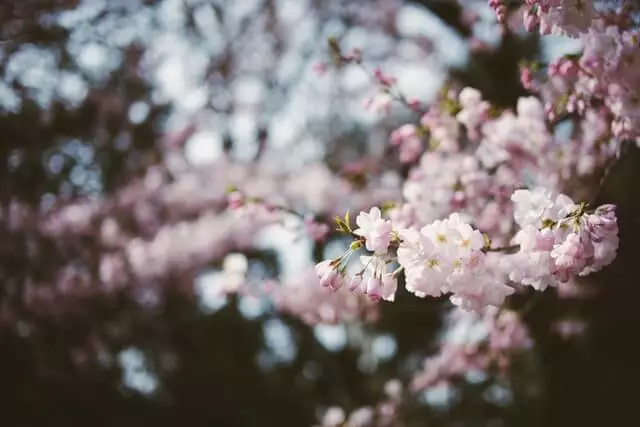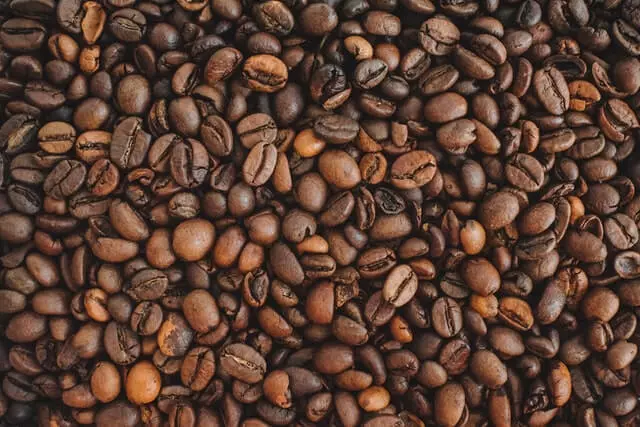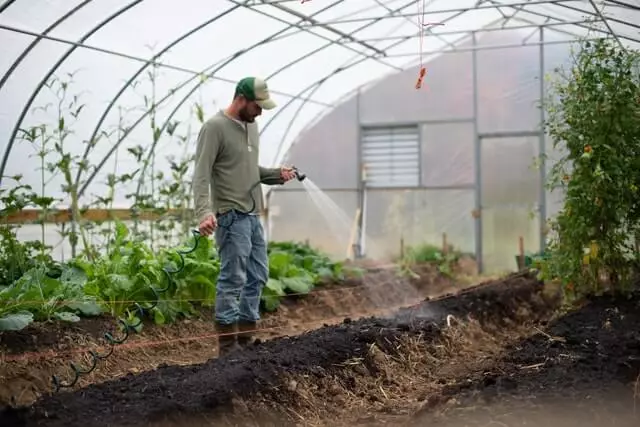A Complete Guide On Growing Coffee Beans At Home!

Contents
Coffee beans are grown in over 70 countries, with most of the world’s coffee being produced in Brazil, Vietnam, Colombia, and Indonesia.
Unfortunately, coffee beans have very low germination rates; thus, only 20% of the seeds grow into full-size plants that produce coffee beans you can use to make your favorite cup of joe.
That’s why it’s important to know what you need to do in order to grow coffee beans successfully!
Can You Grow Coffee Tree At Home?
Yes, you can grow coffee beans at home. Nowadays, lots of people grow it as a hobby and they get their own supply of coffee without even paying for it.
Growing your own coffee tree is very easy and anyone can do it, however you need to know certain things like what kind of coffee plant should I grow?
How often should I water the plant? Should I add fertilizer or use organic methods? Keep reading to know more about growing coffee beans at home.
How Long Does It Take to Grow Coffee Beans?
Many people wonder how long it takes to grow coffee beans. Although we can’t give you an exact timeframe, you’ll be pleased to know that it doesn’t take as long as you think.
After all, most trees start producing fruit or nuts within just a few years after they have been planted.
The time it takes for coffee beans to grow depends on several factors and usually falls into one of three categories: quick, intermediate and slow.
Let’s go over each of these growth cycles so that you can figure out what type of growing conditions your beans will thrive in.
If you’re growing coffee plants at home and want to plant new trees, we recommend giving them enough time to fully mature.
Most types of coffee plants don’t begin producing fruit until they are between 5 and 7 years old.
Once your tree is around five years old, it will be ready for harvesting for about two or three months.
At that point, it will begin budding again and continue producing beans during most of its second year of life.
How to Grow Coffee Beans At Home?
There are a number of ways to grow coffee beans. In fact, you don’t even need to purchase any beans for your coffee growing endeavors.
If you want to grow coffee beans at home, plant coffee seeds or buy some green/roasted coffee beans from a local market or an online store.
Planting coffee seeds is pretty straightforward and not much different than planting other types of plants. It just takes time and patience.
For example, it takes about three years before your plants will be ready to harvest. To start off with, find an area that gets lots of sunlight and is sheltered from strong winds (eastern exposure is ideal).
The area should also have rich soil that drains well so water doesn’t pool up around your plants as they grow taller (this can cause root rot).
Once you have found an appropriate spot in your garden:
1. Dig holes that are 6-8 inches deep and fill them with rich soil mixed with compost.
2. Add one cup of fertilizer per hole, mix everything together, and then place one seed into each hole.
3. Water the plant thoroughly and then cover each hole with mulch to help retain moisture and keep weeds away.
Keep your plants moist but not soaking wet throughout their first year until they are established enough to survive on their own.
When harvesting your coffee beans, make sure you pick only ripe berries because unripe berries won’t taste good no matter how hard you try roasting them later on.
You can tell when berries are ripe by looking for vibrant colors, a thin skin around each bean, and plumpness.
This process may take longer than you think! But if you wait patiently until all these conditions are met, your efforts will pay off when you enjoy delicious cups of coffee!
How Long Does It Take to For Coffee Plant To Bloom Flowers?
There are a number of factors that determine how long it takes for a coffee plant to bloom, including its growth rate, pollination and other external influences.

However in average it take a whole year to bloom flowers from the plant. In addition, flowering time is also affected by what kind of crops are planted next to your coffee plants.
There are many kinds of plants and crops in nature, and when you grow them together with your coffee, it can affect their blooming time.
The best way for you to ensure that you have access to fresh-bloomed coffee beans is through germination from reliable seeds.
Germinating seeds from reliable sources can help produce healthy seedlings that will lead you towards bountiful harvests in due time!
Also, if you plan on growing your own coffee beans from scratch then it’s important for you to know that how long does it take for a coffee plant to bloom flowers also depends on whether or not it’s been exposed directly or indirectly into chemical fertilizers.
It is well-known for its effects of developing fruits and vegetables abnormally with decreased production rate.
Also, pesticides and insecticides are known to make your coffee plants prone towards getting affected by pests like molds and plagues.
What Climate Do You Need To Grow Coffee Beans?
As with most plants, climate is an important factor when growing coffee beans. Only specific regions of our planet have that perfect combination of temperature and rainfall levels needed for optimal growth.
While you could technically grow coffee in any region with sufficient sunlight, your crop would be dramatically affected by environmental factors like wind and rain.
Therefore, it’s important to research where exactly your desired bean originates before attempting a home-grown harvest.
Most coffee beans are harvested in South America and Africa, while robustas come from India or Indonesia.
Where and how you grow your coffee beans is as important as how you roast them. If a coffee plant grows in shade, it will produce berries that are more full-bodied than those grown in direct sunlight.
Also, soil quality and water supply heavily affect growth of any plant. Coffee plants like porous, non-sandy soils with plenty of microorganisms but that aren’t waterlogged.
Too much or too little water can lead to stress for your plants and result in poor crops or rotted berries, respectively.
For many home growers these factors aren’t even an option, so don’t be discouraged if you don’t have your own ideal environment for growing coffee beans—there are steps you can take to get good results from whatever circumstances you’re working with!
Can You Grow Coffee From Roasted Beans?
Once coffee beans have been roasted, the beans are unable to germinate. However, if you’re not sure about roasting your own coffee beans or you find yourself with leftover beans after a roast party, there is an option for making more plants.
After roasting the coffee bean it can be stored at room temperature in a sealed container for up to 24 hours.
If the bean is then placed in fertile soil and watered regularly, roots will begin to grow within one week and shoots will develop within two weeks.
If left undisturbed after eight weeks of growth, mature plants will form that can then be used to produce new seeds that can be planted once again.
Best Types Of Coffee Beans To Grow At Home
1. Robusta Coffee Beans
Robusta coffee beans are most commonly used in espresso blends and instant coffee, and for good reason. These beans have much more caffeine than Arabica beans, with an average of 3–4% compared to 1–2% for Arabica.

Robusta is also generally cheaper than Arabica because it grows at a faster rate. Most robusta is grown in Africa, India, and Brazil, but there is some robusta grown in Latin America as well.
Despite what you may think based on its name, robusta is not all that robust—it tends to grow best at lower altitudes in less fertile soil, however arabica grows in highe altitudes.
It’s also a very drought-tolerant plant that can handle extreme changes in temperature and poor soils.
2. Arabica Coffee Beans
Arabica coffee beans are considered more rare and it is known that Arabica coffee tastes better than Robusta.

In addition, Arabica coffee beans have a higher nutritional value as well. As a result, many people tend to choose it over others for both taste and health reasons.
However, there is also another reason why Arabica beans are preferred by some people; these type of beans produce high-quality coffee because they require approximately 150 days from plantation until harvesting and roasting them into coffee product.
This long period allows several of its compounds to properly develop in order for its flavor not to be ruined during its growth stage or processing.
Read About: The Difference Between Robusta and Arabica Coffee Beans
3. Liberica Coffee Beans
Liberica coffee beans, also known as Coffea liberica, are a species of coffee bean cultivated in tropical and sub-tropical areas throughout Africa.
Most people in West Africa would agree that Liberica is what gives a delicious taste to their special cup of joe. It is an exceptionally delicious variety of Arabica coffee bean with a unique flavor profile!
But what exactly sets Liberica apart from other types of beans?
The major difference between these two varieties is where they come from – Central and South America vs East Africa.
But aside from that, they have pretty much identical physical properties and grow very similarly under similar environmental conditions!
Additionally, both arabica and liberica beans are considered fine or specialty coffees, so you can’t go wrong either way.
What Is The Average Lifespan Of A Coffee Plant?
It depends on a few factors, but in general coffee plants can live for about 100 to 110 years.
They can grow up to 30 feet (9 m) tall and take between five and ten years to bear fruit. While some trees are still producing beans at 25 years old, a tree’s fruit will begin to decline after 50 years.
While there is a limit to how long a coffee plant will produce, it won’t die off quickly; it takes at least two or three years for one to perish.
This longevity makes sense when you consider that young seedlings might not flower until they are seven or eight years old—or older if they end up growing in shade!
Useful Tips On Growing Coffee Beans At Home
1. Feel The Soil
Even after you’ve added your well-rotted manure and compost, your soil may still be too dry. The best way to tell if your soil is too dry is by looking at its texture.
If it feels gritty or granular, like powdery sand or salt, then that’s a sign that there’s not enough moisture for proper growth.
Soil should feel loamy and rich when squeezed in your hand. It shouldn’t fall apart easily or crumble away into dust.
To remedy it, start watering with a light spray once per day until it reaches a moist (but not wet) state.
2. Never Overwater While Growing Coffee Beans At Home
This seems like a no-brainer but if you’re overwatering your plants, you could be actually causing them to wilt and eventually die. Be aware of your local weather conditions and water accordingly.

While coffee plants are not as sensitive as some other plants, if they are overly moist for too long their roots can rot which could result in root damage that might never heal.
As a general rule of thumb, most plants should be watered once a week unless it is extremely hot or dry outside, where watering should occur every other day.
A good way to test whether or not your plant needs watering is by checking its soil; stick your finger in about an inch deep into moist soil and check its moisture level by taking out a bit and squeezing it between your fingers.
3. Keep Pests Away From the Coffee Plant
When grown in a warm and humid environment, coffee beans are highly susceptible to infestation.
To prevent pests from damaging your plants, it’s essential that you treat them with a pesticide that kills insects but does not affect humans or animals.
Treat your plants once per week during each phase of growth (seedling, vegetative and flowering).
For optimal results, use an organic pesticide like neem oil. Neem oil is derived from neem leaves and has been used for thousands of years as an organic pest repellent.
It contains fatty acids and other compounds that can interfere with insect feeding behavior as well as their development processes.
4. Keep Your Plant Away From Pets And Children
It is important to keep your coffee plant away from pets and children. While many people like to include their family members in their gardening activities, you will want your coffee plant somewhere where it is not accessible by children or pets.

Not only can coffee plants be toxic if ingested, but they also contain oils that are flammable and potentially explosive.
It is crucial that your plant is far enough away from any flame or other ignition source as well as household chemicals that can react with it.
5. Do A Research Throughly On The Type Of Coffee Plant Before Planting
While there are a variety of coffee plants that can be grown in different areas, some being better for tropical regions and others being more suitable for mountainous areas, knowing what you are working with before planting is key.
For example, Arabica coffee beans make a superior cup of coffee as compared to Robusta beans.
The plant itself is also important; for instance, Robustas grow much larger than Arabicas but have a lower yield per plant.
The type of soil you have available will also play an important role in determining which plant will thrive best where you live.
Ideally, it’s best to start off by researching each type of bean and its ideal growing conditions before deciding on one specific bean to grow on your farm or plantation.
This way, once your crop begins producing, you’ll know exactly how much time and effort it takes to harvest each batch of beans so that you can get them to market at just the right time while they’re still fresh and full-flavored.
The Bottom Line
Certain plants have specific soil, water and light needs. As you’re planning your garden or landscaping, think about which plants will thrive in your area, with these variables in mind.
And don’t forget that when you transplant a plant, it can be left out in full sun for up to three days before being planted; that helps it adjust to its new surroundings.
Try growing beans under your arbor or up a trellis. Plant flowers around them and keep weeds out of flower beds so they don’t compete for moisture and nutrients—and set yourself up for success next year!
If you happen to have any coffee beans leftover from last year’s crop, store them properly; they should last up to 12 months if kept dry.

